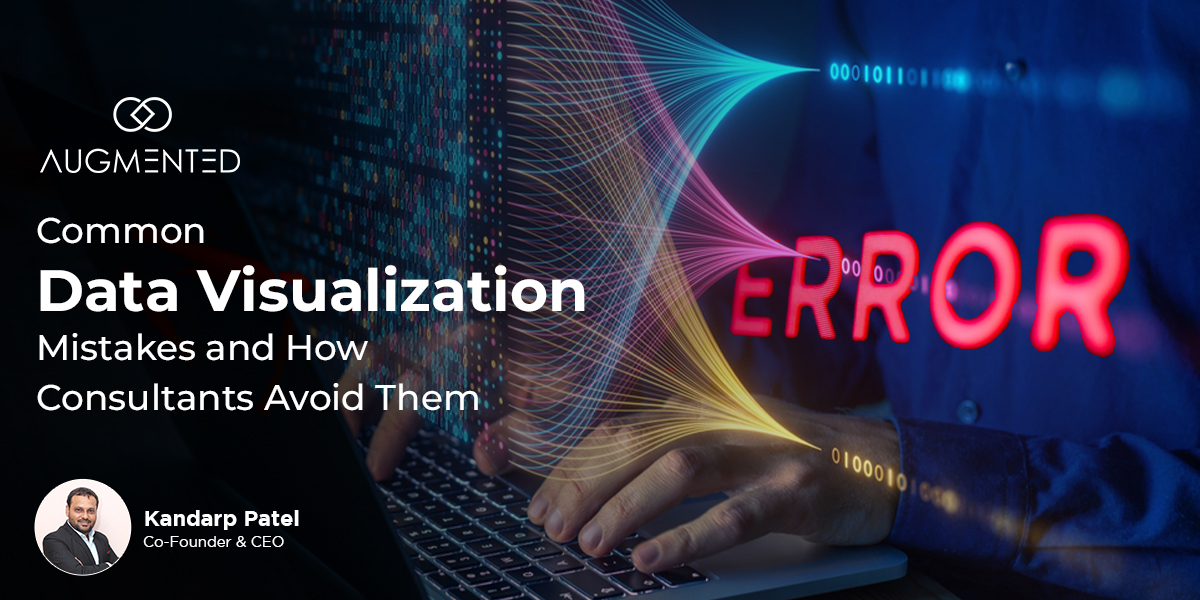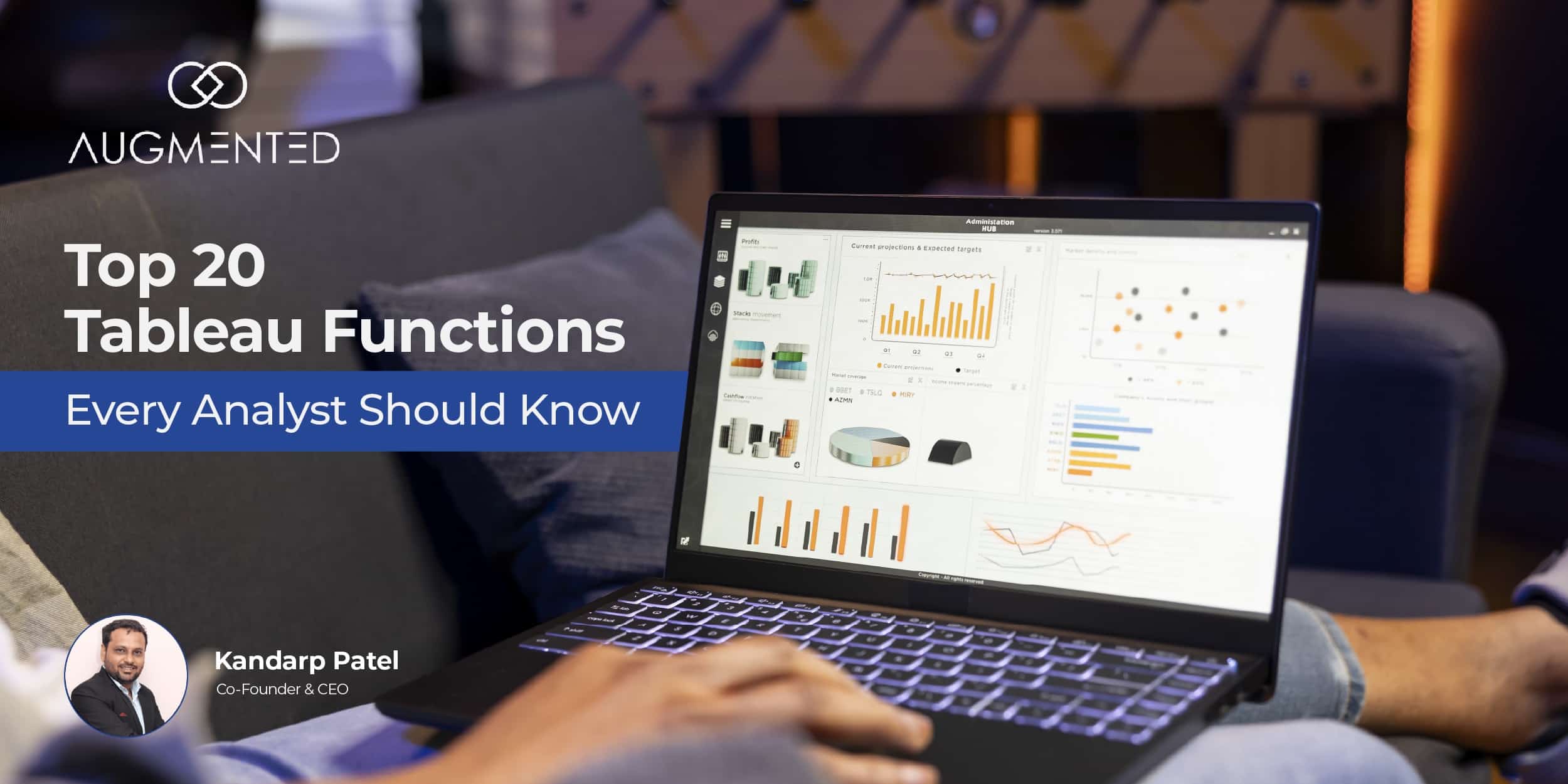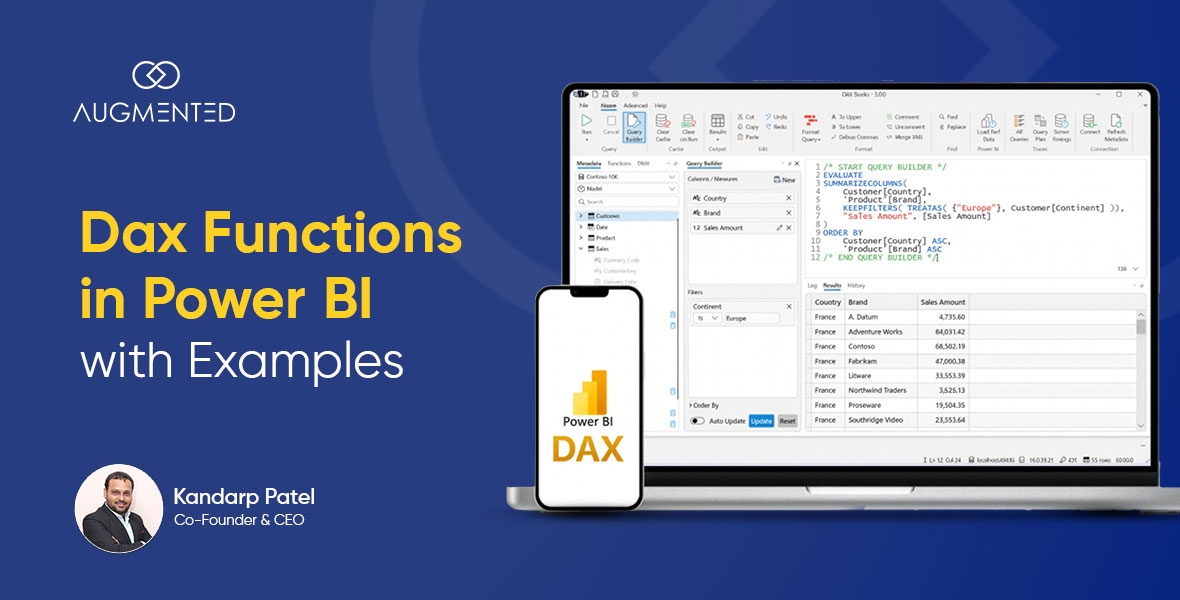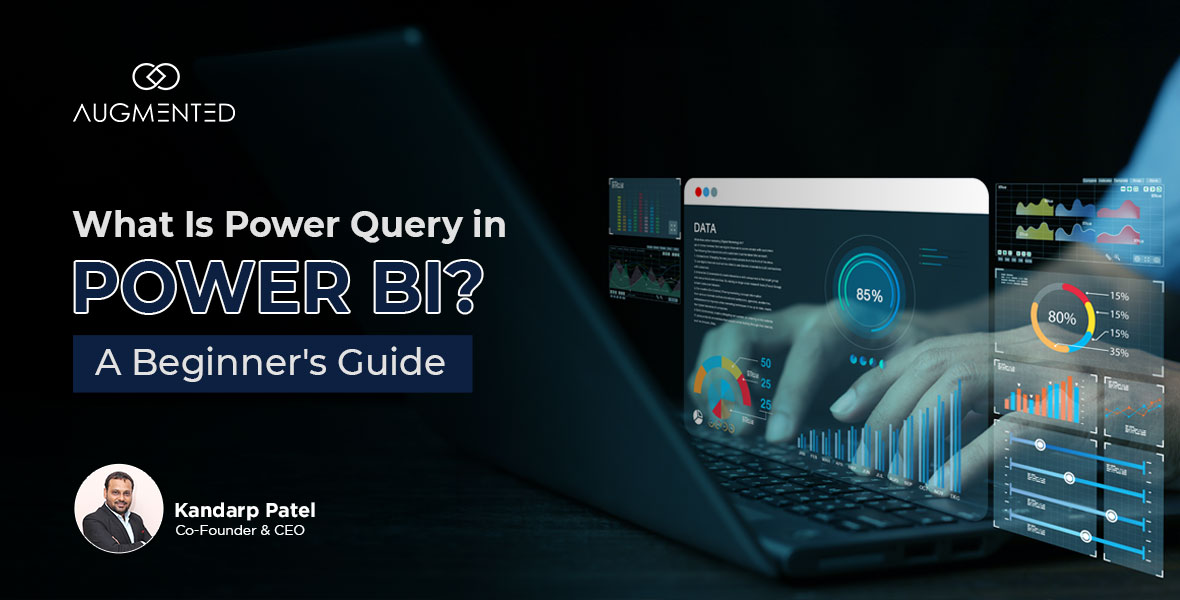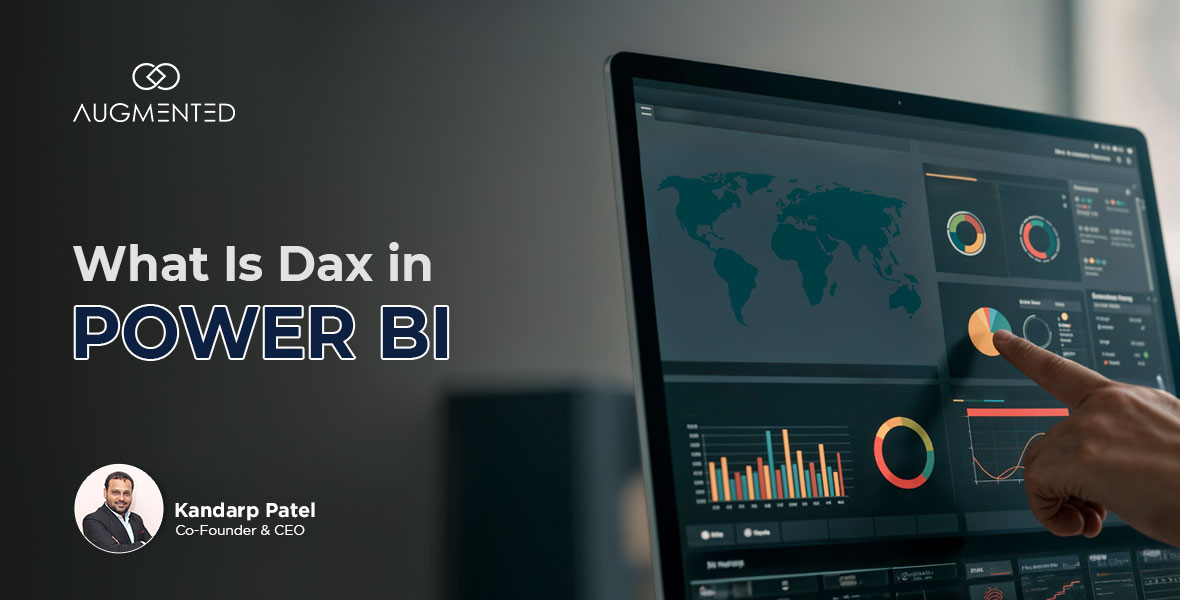In the information age, attention spans are decreasing, whereas growth is more important than ever.
In the era of thrive or die, how can you reach more people and inform them of your products and services?
If you’re still with us, that means this question is of vital importance to you.
And the answer to your question lies in visualization.
We believe that visualization holds the power through which you can gain and retain customers even in the age of ever-reducing attention spans.
However, data visualization isn’t without its challenges. Just as vivid visualization vamps viewers, poor picturization promotes peril.
So, why are some data visuals more attractive than others? What sets a good visualization apart from a poor one?
Well, visualization is like any other concept—there are ideal ways to use it and mistakes that can blur its message.
But don’t worry; we won’t let your visuals get lost in the void of visualization errors!
In this blog, we’ll tell you how you could be committing data visualization heresy. We’ll also baptize you with data visualization’s best practices to help you engage with your target audience!
Pitfalls of Poor Visualization - Is Bad Visualization Really That Bad?
The role of data visualization has been to transform the way we tell stories or convey information. Gone are the days when people clung to every word they read while exploring ideas. Scanning is the new reading.
So, before we understand what data visualization mistakes you can make, let’s see why you should avoid them in the first place:
-
“Failed to Deliver Message”
What does the data visualization process entail? To create an image that says a thousand words without using any. So, it’s not that bad visualization doesn’t paint a picture. Rather, the visual invokes words that aren’t the ones you want it to.
So, the first peril of bad visualization is its failure to deliver the intended message.
-
Inaccurate Visualization is Broken Communication
It’s not that viewers will just ignore bad visualization. After all, how would they even know that the visualization contains a mistake without at least glancing at it? So, unless you’re using really repulsive colors (which, as we will see, you should avoid at all costs), people will at least give your visual a chance.
And that’s exactly where the problem lies. If the viewer trusts your visual or is enticed by it, they’ll expect it to convey something useful.
If it doesn’t, they might not appreciate the message. Worse, they’ll probably not even give your next visual a fair chance.
To them, you’ll be the boy that cried wolf (or “look here”). Thus, poorly visualized data can be worse than no visualization at all!
-
Visible Waste of Resources
Data visualization consultants say that every instance of visualization has an opportunity cost. The radar chart you drew up to demonstrate your product’s strength to potential customers could instead have been a Venn diagram that did both - conveyed the strengths and convinced them to purchase it.
Remember, a billboard, the first slide of your presentation, or the lead image of an Instagram story can only accommodate one visual. Thus, every suboptimal visual is an opportunity lost. And we’re not even accounting for the time and the resources wasted in making the visuals themselves.
Now that you see why you should take a closer look at the visuals you create and use, let’s consider what mistakes could make them less effective.
Common Data Visualization Mistakes (And How To Avoid Them)
Not all of us are data visualization specialists. So, data visualization mistakes can be hard to see. After all, you just converted complex calculations into accessible images! What could’ve gone wrong?
Well, let’s look at a list of common errors to watch out for when before and during the process of data visualization:
1. Warning: Information Overload Detected!
Why do we visualize? To convey a message without asking the viewers to perform mental gymnastics. Well, bad visualization does both: it puts an image into the viewers’ minds and asks them to interpret its meaning.
Thus, bad visualization takes the scenic route to failure - the list that should’ve been an image becomes an image that might as well be a list! How should you avoid this?
-
Identify Purpose
Before visualizing the data, visualize the purpose of visualization. Why do you want to show your viewers this data? Do you want to inform, invite or incite?
Once you know why you’re visualizing, you’ll better understand how you should do it.
-
Use Interaction
Sometimes, backing a visual with a lot of data is unavoidable. For instance, say you’re running a fantasy football and betting app. Your visualization must be supported by detailed analytics so that participants can understand trends and odds.
How should you avoid overloading information in the visual?
By allowing users to select what data they want to visualize! They can select the month, the player, the game or the team whose data they want to analyze visually. Interaction allows viewers to be in control, which retains their attention and even increases traffic.
2. Use the Wrong Charts, Get the Wrong Results (Alt: Wrong Charts = Wrong Results)
Another common data visualization mistake is to use the wrong medium.
For example, let’s say you want to show your team quarterly sales trajectories of the three products you launched last year. Should you choose three different bar graphs or one neat column chart?
You could go with the first one - but everyone will hate you after sitting through the sales meeting.
And that’s certainly not the goal of your visualization!
So, you must avoid data visualization’s problem-solution mismatch. Every type of data will have an ideal visual representation.
But how will you know which visual fits what data? Consider two suggestions:
-
Study Available Variants
After you have identified why you want to visualize your data, explore different media of visualization.
- If you're going to demonstrate the user intent of a single product, use a pie chart.
- Go for a Venn diagram to identify common user intents of different segments.
- If you want to understand the buying journey, visualize it through a Gantt chart.
-
Try Different Charts
Sometimes, instincts can fail you: a chart you through was optimal for a dataset looks skewed now that you’re staring at it.
In such cases, data visualization consultants suggest you try visualizing the same data through different charts until you spot the ideal visual.
You don’t get a second chance at first glance, so iterate till you’re satisfied you’ve found the best version!
Criticizing your creations is hard. After all, you understand the work and the story behind your data, so why wouldn’t others?
Precisely because they’re not you!
We use visuals because we understand the data and want the viewers to grasp what we see. But still, we’re the ones making the visuals. How should we account for this gap?
-
Visualize for Viewers
First, ask yourself: For whom are you visualizing the data? Fellow employees? Potential customers? Executives? Partners?
Curate the visualization based on their experience, expertise and enthusiasm. Tailor it to the level of their investment in seeing the visual. Match the intent behind the visualization with the viewer who needs to be convinced.
-
Visualize Where?
Second, consider where people will encounter your data visualization. Is it for a captive audience during a product launch? For a billboard that people could easily miss? Or will people come across it on their Instagram feeds?
- A Venn diagram could look great on a billboard.
- But people could definitely look at a radar chart on their Instagram.
- On the other hand, even a captive audience would appreciate a simple pie chart showing them how much discount they’re about to get.
So, visualize how and where people will encounter your visualization before rendering it.
4. Error: Narrative Not Found
Good visualization tells a story. For instance, a Venn diagram can tell viewers why they’re at the center of a product’s appeal. A heat map can advise them to drop a player from their fantasy football team. A density map could convince them to come and live in your new rental unit.
Similarly, a bad visualization doesn’t tell a story: it merely displays data.
Poor pictures may have a purpose, but they don’t have the right one. A good visualization always tells a story; if it doesn’t, the users will make one up on their own or forget the visual. Either way, your resources get wasted. To avoid this:
-
Tell a Story
Before visualizing, narrativize. Ask yourself: what does the data tell you? What would convince the viewers?
Bridge the gap between the two questions to develop a story that fits the data and will appeal to the viewers. Even if the viewers forget the visual, they’ll remember the story. After all, isn’t that the goal of a visualization?
-
Seek Feedback
Even the best data visualization consultants seek feedback on the visuals they render. We recommend the same. Feedback helps break through creator bias and look at the visual through a different lens.
At the same time, it allows you to understand the narrative that your visual constructs in the viewers’ minds. If it’s not what you intended, refine, reframe, and rework the visual.
5. Dirty Designing
Data visualization is as much about visualization as it is about data. Without bright colors that bite or a consistent scheme that soothes, your visualization is incomplete!
And an incomplete visualization will convey an incomplete message! So, colors are critical for clear delivery. Here’s how to avoid displeasing design, the deity of data visualization:
-
Choose Consistent Colors
Sticking with the theme of your visual is as vital as choosing one. This is easier said than done. Answer three questions before picking the colors for your visualizations:
I. What colors soothe and suit the message?
II. Which colors can distract the viewers from the story?
III. Where should color contrast be avoided to minimize noise?
To pick consistent and comforting shades for your visuals, respect the holy trinity of coloring visualizations.
-
Let the Colors Talk
Sometimes, colors offer more than contrast. They represent more than different variables. They can also show sensitivity.
For instance, if you’re a health insurance agent, a visual representing the cost of medical care in red and the savings through insurance in green can symbolize blood and money without you even mentioning the words.
So, don’t just pick contrasting colors; tell a color story.
-
All About the Data
Sometimes, your visuals are doomed before you even render them. Why? Because they’re based on shaky data. After all, how can your visual convince the viewer if its message itself is incorrect?
For instance, an outrageous visualization that contrasts Republican and Democrat voters can garner a million views.
However, if you fail to contextualize the data with population density, the comments on the visual will drive you to infamy. Thus, clean data is a prerequisite for clear visuals.
Here’s how you should avoid visualization errors due to convoluted data:
-
Clean the Data for Consistency
Sometimes, your sales figures tell a brilliant visual story. But, the scale on which they are compared is inconsistent. While Product P is scaled per thousand units sold, Product Q is measured for every ten thousand units.
Remember, if your visual narrative is outrageous but based on an error, even one closer look will unravel it.
Ironically, the visualization that is supposed to aid your storytelling could be the end of your story. So, the moral is to clean the data as much as possible before visualizing it.
-
Digest the Data Before Designing the Visual
“If you torture the data long enough, it will confess to anything,” goes the adage. Remember, confessions under torture are almost always inaccurate: they’re volunteered out of insight but spat up for survival.
The best visuals aren’t aimed at survival; their goal is to convince. And in the long run, it is better to convince people of genuine insights rather than lead them to quick conclusions.
To this end, don’t design a visual and then hunt for data that fits. Trust the process: follow the data and show the viewers its genuine conclusion.
Data Visualization Consultants Say…
Visuals used to cost a dime a dozen. With the advent of AI, they cost even less. Or do they?
As we have seen, bad visualizations cost more than money. Defective data, dirty design, no narrative, biased basis, clunky charts, and invasive information can blur even the most vivid visuals. They can drive users away, fail to deliver the message and waste your resources.
So, what should you do to ensure you follow data visualization’s best practices?
We can help! At Augmented Systems, we specialize in helping you eliminate data visualization mistakes by providing you with visualization experts tailored to your company’s needs!
Look no further for expert visualization assistance: contact us today, and together, let’s create promising visualizations for your audiences!
